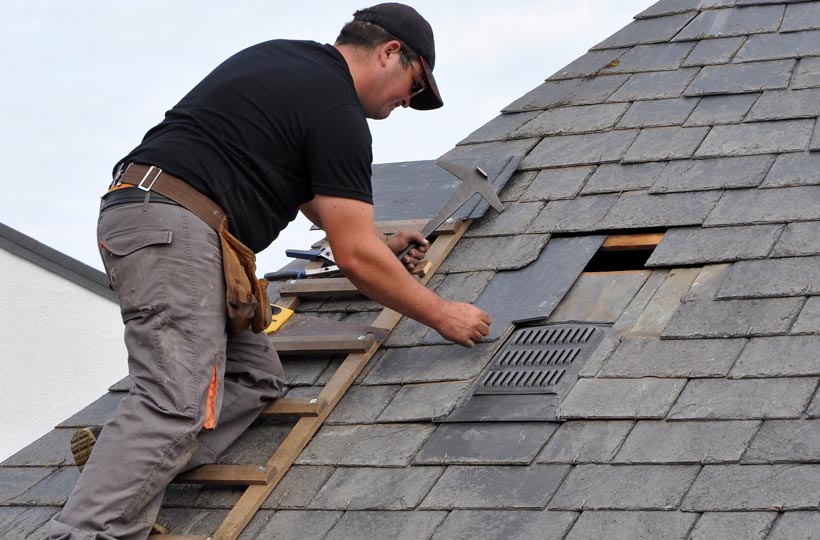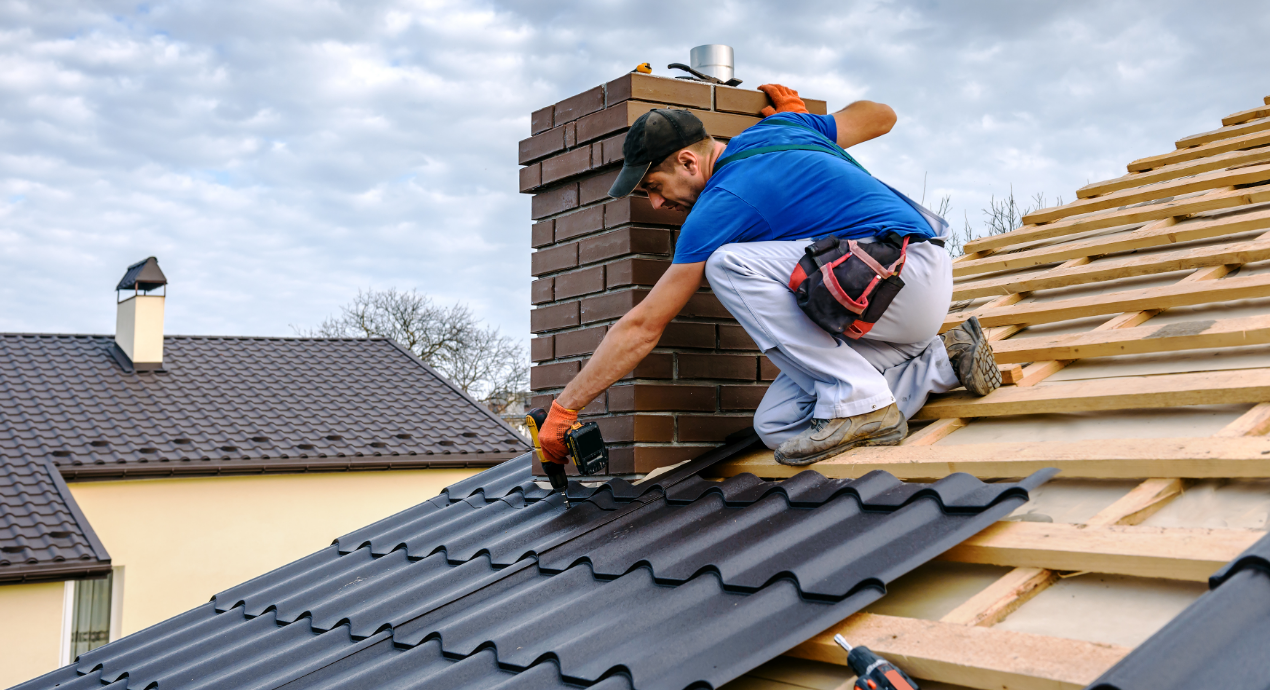Recognizing the Various Kinds of Roofs: A Comprehensive Guide for Homeowners
In the realm of homeownership, choosing the proper roof covering design is a choice that lugs significant effects for both functionality and aesthetic appeal. With a range of choices-- ranging from the conventional gable to the contemporary flat-- each type provides distinct advantages and difficulties that must line up with the home owner's details needs and environmental factors to consider. Understanding these differences not just help in making an enlightened option yet additionally influences long-lasting maintenance and power performance. As we check out the ins and outs of different roofing system types, it comes to be obvious that a person size does not fit all; the right selection might amaze you.
Saddleback Roof
Saddleback roofs, identified by their triangular form, are among one of the most preferred roof designs as a result of their simpleness and effectiveness in shedding water and snow. This layout features 2 sloping sides that satisfy at a ridge, enabling efficient water drainage and lessening the risk of water buildup. The steep pitch commonly connected with gable roofings improves their ability to handle hefty rainfall, making them suitable for different climates.
Along with their practical benefits, gable roof coverings offer aesthetic convenience. They can be adapted to various architectural designs, from typical to modern homes. The style can likewise suit additional features such as dormer windows, which boost all-natural light and ventilation in the attic room room.
Moreover, gable roofs supply ample area for insulation, adding to power performance. Homeowners can select from a range of roof products, consisting of asphalt roof shingles, steel, and floor tiles, better boosting customization options.
Despite their advantages, saddleback roofs may require additional support in areas prone to high winds or heavy snowfall. In general, the saddleback roof continues to be a preferred option because of its blend of performance, toughness, and aesthetic charm.
Flat Roofs
Flat roof coverings are often recognized for their minimal layout and functional applications, specifically in business and commercial settings (oahu roofing). These roofs include a nearly horizontal or straight surface area, which enables simple building and construction and flexible room use. While they may do not have the visual charm of angled roofs, flat roof coverings supply many advantages, especially in city atmospheres where optimizing area is essential
Among the main advantages of level roofing systems is their ease of access. House owners can utilize the roofing area for numerous purposes, such as rooftop gardens, balconies, or solar panel installments. Furthermore, level roofings are usually more economical to maintain and set up contrasted to their sloped counterparts, as they call for less materials and labor.
Usual products used for flat roofing systems include built-up roof (BUR), customized asphalt, and single-ply membrane layers, each offering distinctive benefits. In general, level roof coverings serve as a useful and adaptable choice for lots of home owners and businesses alike.
Hip Roofing Systems
Hip roof coverings are characterized by their sloped sides that merge at the top, creating a ridge. This design stands out from gable roof coverings, as all four sides of a hip roofing system slope downwards toward the wall surfaces, giving an extra secure structure. The angle of the slopes can vary, permitting versatility in building aesthetics and functionality.
Among the key benefits of hip roofing systems is their capability to withstand hefty winds and negative weather condition conditions. The sloped surface areas allow better water drain, minimizing the danger of leaks and water damages. Furthermore, hip roofing systems provide increased attic room room, which can be read the article used for storage or perhaps transformed right into comfortable locations.
Nevertheless, building a hip roofing can be extra intricate and expensive than easier roof types, such as saddleback roofs. The additional material and labor involved in creating the slopes and ensuring proper architectural honesty can cause higher expenses. In spite of these disadvantages, numerous house owners favor hip roofing systems for their durability, aesthetic charm, and potential for power effectiveness.
Mansard Roofings
Mansard roofs, frequently identified by their distinct four-sided style, attribute two inclines on each side, with the reduced incline being steeper than the top. This architectural style, stemming from France in the 17th century, is not just visually appealing however functional, as it maximizes the functional area in the top floorings of a building. The steep lower slope enables even more clearance, making it an excellent choice for loft spaces or attic rooms, which can be transformed into living spaces.
Mansard roofings are identified by their flexibility, suiting various architectural styles, from standard to modern-day. They can be constructed with various products, including asphalt roof shingles, slate, or steel, providing property owners with a variety of alternatives to suit their budgets and preferences. Additionally, the style permits the integration of dormer windows, improving natural light and ventilation in the top degrees.
Nevertheless, it is crucial to take into consideration the possible downsides. Mansard roof coverings might require more upkeep as a result of the complexity of their design, and their high slopes can be testing for snow and rain runoff. Overall, mansard roof coverings incorporate style with usefulness, making them a preferred option among homeowners looking for distinct architectural functions.
Lost Roofing Systems
As property owners increasingly look for simplicity and functionality in their building styles, lost roofings have actually emerged as a popular selection. Characterized by a solitary sloping airplane, a shed roof offers a minimalist visual that matches various home designs, from contemporary to rustic.
One of the primary benefits of a shed roofing system is its straightforward building, which frequently translates to reduce labor Check This Out and material prices. This style permits effective water drainage, minimizing the threat of leaks and water damage. Additionally, the upright slope gives sufficient space for skylights, enhancing natural light within the interior.
Lost roofing systems also supply versatility in regards to usage. They can be efficiently incorporated into enhancements, garages, or outside frameworks like structures and sheds. Furthermore, this roof covering design can accommodate different roof materials, including metal, asphalt roof shingles, or also environment-friendly roof coverings, aligning with green campaigns.
However, it is necessary to think about regional climate conditions, as heavy snow loads may require modifications to the roofing's angle or framework. In general, lost roof coverings present a useful and aesthetically pleasing option for property owners wanting to make best use of capability without jeopardizing style.
Conclusion


Gable roofings, characterized by their triangular form, are amongst the most popular roofing styles due to their simpleness and performance in shedding water and snow. oahu roofing. The steep pitch commonly linked with gable roof coverings improves their capability to handle heavy rainfall, making them ideal for different environments
While they may do not have the aesthetic allure of pitched roofing systems, level roofing systems offer many benefits, particularly in city atmospheres where optimizing space is critical.
